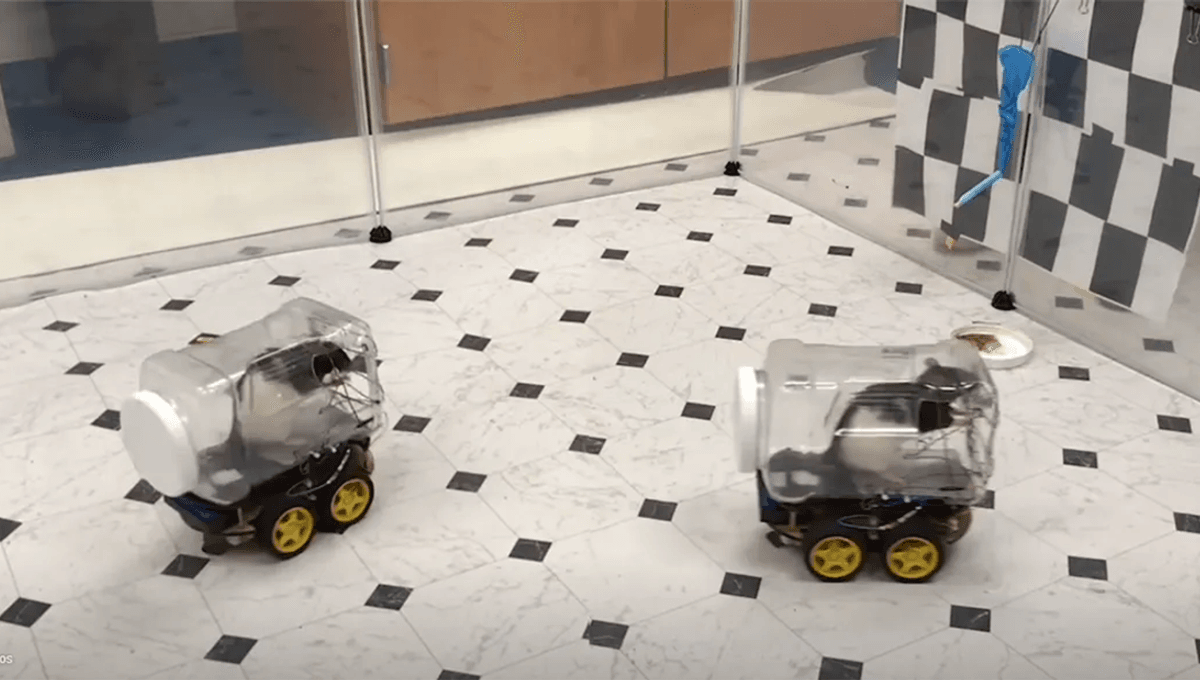
A neuroscientist who famously taught rats how to drive back in 2019 has explained why she did it, what we learned from it, and how those findings might relate to humans.
In 2019, a study went viral for fairly obvious reasons. It involved training rats to drive little rat cars around a laboratory, earning themselves food for their trouble when they negotiated their way toward it.
Human driving instructors, please take note of this reward system.
Though “because we can” would serve as a good enough explanation for why they did it, the team’s aim was to study learning behavior in the rodents.
“Although cars made for rats are far from anything they would encounter in the wild, we believed that driving represented an interesting way to study how rodents acquire new skills,” Dr Kelly Lambert, study author and professor of Behavioral Neuroscience at the University of Richmond, explained in a piece for The Conversation.
The study involved 11 rats, six of which were placed in standard laboratory cages, while five were placed in “enriched environments” modeling their natural habitat, with added toys to play around with.
“The findings that the animals housed in a complex environment had more efficient learning in the driving task confirms that the brain is a plastic organ that is molded by our experiences to some extent,” Lambert explained to IFLScience in 2019. As well as performing better in their driving tests, the rats housed in a complex environment also continued to show more interest in the car after the food reward had been removed.
“I tell my students that they are accountable for what they do with their brains every day of their lives – more challenging and enriching lifestyles lead to more complex neural networks.”
While there were clear benefits to humans in terms of knowledge, there was something in it for the rats too.
“Unexpectedly, we found that the rats had an intense motivation for their driving training, often jumping into the car and revving the ‘lever engine’ before their vehicle hit the road,” Lambert wrote in the Conversation.
In the latest piece for The Conversation, Lambert describes how she noticed one curious behavior during the height of the COVID-19 pandemic in 2020.
“When I walked into the lab, I noticed something unusual: The three driving-trained rats eagerly ran to the side of the cage, jumping up like my dog does when asked if he wants to take a walk,” she wrote.
“Had the rats always done this and I just hadn’t noticed? Were they just eager for a Froot Loop, or anticipating the drive itself? Whatever the case, they appeared to be feeling something positive – perhaps excitement and anticipation.”
Following this, the team shifted focus to study how anticipation of positive events can shape neural functions, making rats wait for rewards such as food and entering their “rat park” play area. Preliminary results from these studies suggest that when the rats were made to wait for their rewards, their outlook became more “optimistic”, and they performed better in problem-solving and cognitive tasks.
“Preliminary results suggest that rats required to wait for their rewards show signs of shifting from a pessimistic cognitive style to an optimistic one in a test designed to measure rodent optimism. They performed better on cognitive tasks and were bolder in their problem-solving strategies.” This fits in with other, slightly less wholesome studies.
“Previous work with lab rats has shown that rats pressing a bar for cocaine – a stimulant that increases dopamine activation – already experience a surge of dopamine as they anticipate a dose of cocaine,” Lambert wrote.
So all in all, it was a pretty good idea to teach rats to drive, both for the rat chauffeurs and the humans studying them.
The study is published in Behavioural Brain Research.
Source Link: Scientist Who Taught Rats How To Drive Explains Why She Did It